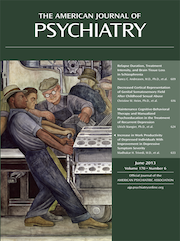Oppression, Depression, and Work in the Murals of Diego Rivera

Diego Rivera (1886–1957), Mexican artist and Marxist, was an esthetically celebrated but politically contentious figure of the mid 20th century. He was a muralist—first using encaustic and then fresco—who painted in France and Italy alongside Modigliani and Soutine and was influenced by Picasso, Cezanne, and the Aztec art of his native Mexico. He was frequently commissioned in the United States to make murals that celebrated the supremacy of American work.
In 1933, during the Great Depression, he was commissioned to paint an inner court at the Detroit Institute of Arts with frescoes that would exalt American progress and the mighty industry of the city (figure). The frescoes depict factory workers, muscles bursting forth from rolled-up sleeves, alongside managers and shiny equipment, including the apparatus for the production of the new 1932 Ford V-8 engine and transmission, the city’s pride and joy.
The murals caused an outcry, because Rivera, a former member of the Mexican Communist Party and a self-proclaimed painter of the oppressed working class, was deemed unsuitable to celebrate the capitalist ascendancy of Detroit. There were threats to whitewash the freshly frescoed walls until Edsel Ford approved the murals and the Detroit public followed suit.
Indeed, Rivera, for all his communist notoriety, said that “Henry Ford [is] a true poet and artist, one of the greatest in the world” and proclaimed that Detroit embodied the best expression of American art—the factory (1).
Yet while the murals celebrate hard work and productivity, their dark, eerie light and the forlorn—or at best, flat—faces of its factory workers suggest the oppressive aspect of capitalism. Work, in Rivera’s depiction, is admirable. Productivity, more so. But an accompanying oppression and depression seem inextricable in these murals and in the minds of Americans, and Detroiters in particular, during the Great Depression. One wonders, looking at these murals, how productive the oppressed worker can be. In this issue, new research by Trivedi et al. assesses how productivity suffers for depressed workers (2).
1 : Detroit was muse to legendary artists Diego Rivera and Frida Kahlo. Detroit News, April 6, 2011 (http://www.detroitnews.com/article/20110406/ENT01/104060365)Google Scholar
2 : Increase in work productivity of depressed individuals with improvement in depressive symptom severity. Am J Psychiatry 2013; 170:633–641Link, Google Scholar



